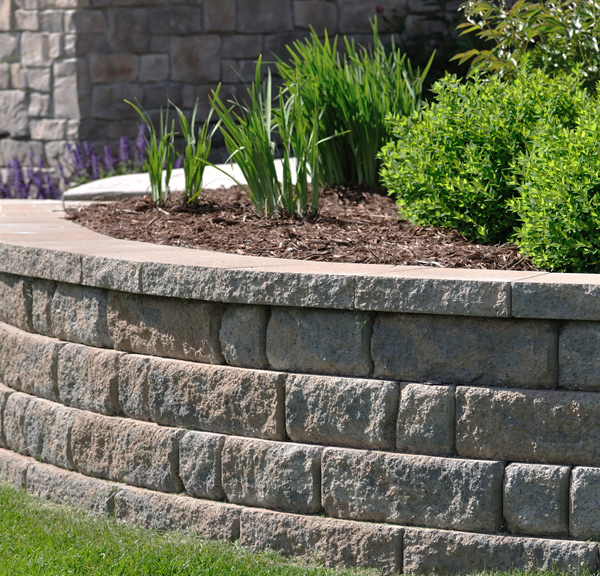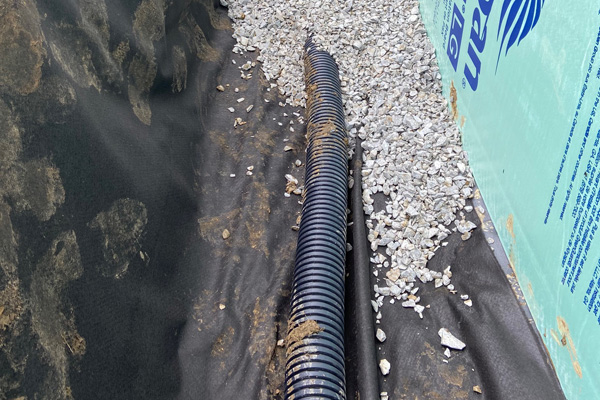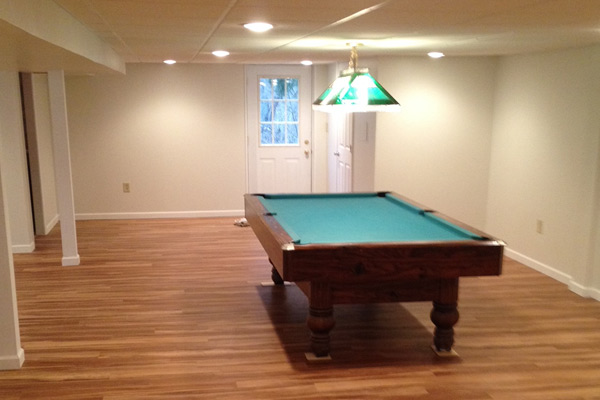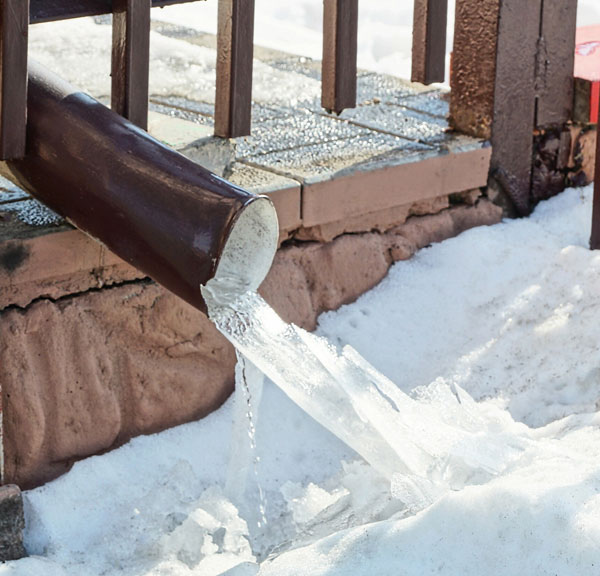
Water in Basement from Melting Snow & Ice
March 18, 2022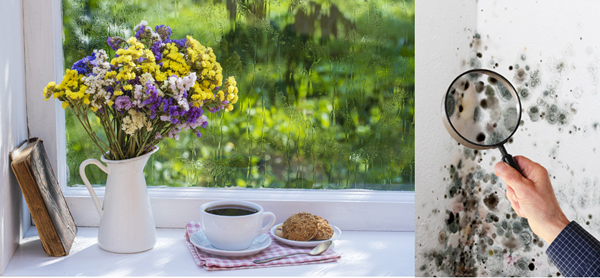
April Showers Bring Spring… Mold!
April 20, 2022Everything You Need to Know About Retaining Walls
If you live in a hilly area or have slopes or terraces on your property, you probably have a retaining wall. Retaining walls can be both functional and beautiful, and they have a variety of uses, including protecting your foundation.
If you’re thinking about building a retaining wall yourself or considering paying a hardscaping company to build one for you, then there are a few things you need to know.
What Is a Retaining Wall?
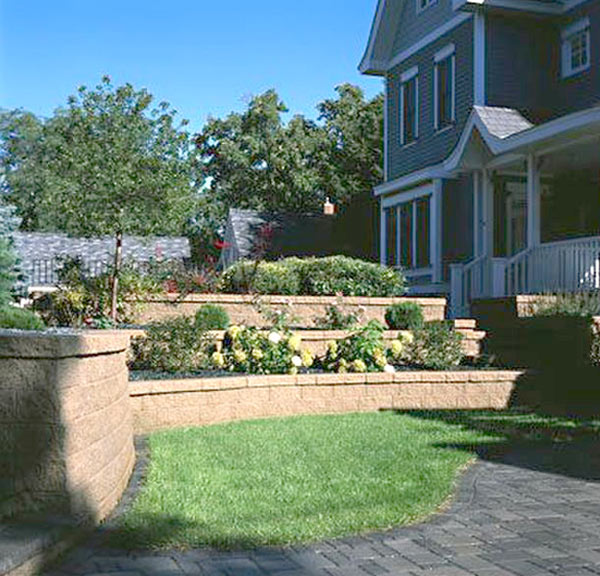 Retaining walls are simply walls of concrete, stone, brick, or other materials and are designed to strengthen and keep earth and soil from eroding and/or collapsing, especially in hilly areas.
Retaining walls are simply walls of concrete, stone, brick, or other materials and are designed to strengthen and keep earth and soil from eroding and/or collapsing, especially in hilly areas.
They often lean slightly back into the soil to prevent the pressure of the soil from pushing the wall down. This is known as “step-back” construction.
Though they are functional, retaining walls are often used to create terraces in a yard, sunken patios, walkout basements, and more, allowing for a variety of interesting landscaping options.
Retaining walls can be built as a single wall or as tiers. The higher a retaining wall is, the more support it needs to hold back the soil, so a tiered solution is often better. Tiers also allow you to create terraces, so for a tall hill, this might be a better solution as it provides extra space for landscaping.
Tiered walls can be especially difficult to build because the upper walls can put additional pressure on the lower walls, requiring a unique, specialized design for the space. You should always work with an experienced company like D-Bug Waterproofing in Greensburg, PA to ensure your retaining walls are high-quality and unlikely to collapse.
There are several different types of retaining walls:
- Gravity retaining wall — the wall starts out wide and gets smaller toward the top. The thick construction requires more stone/concrete/brick than other types of retaining walls and is rare because of how much material is needed for construction
- Wood wall/anchored wall — best used when you want a wooden finish on the wall instead of stone. Concrete-anchored support beams are put into the ground and connected to the wall. Wood is layered over the outside of the retaining wall
- Cantilevered retaining wall — similar to a gravity retaining wall, a cantilevered retaining wall has a concrete base that goes into the soil, requiring less material to build
- Sheet pile retaining wall — two planks of steel or wood are sunk into the earth then anchored together with cables.
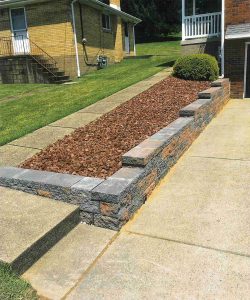
At D-Bug Waterproofing, our retaining wall builders are experts in landscape grading, redirection of water flow, and the proper installation of wall footers, backfill, and French Drains.
We use the finest Versa-Lok retaining wall systems, giving you an outstanding result that improves the value of your home, provides curb appeal, and will last a lifetime.
Though the main purpose of a retaining wall is to hold back soil, prevent erosion, and create a visually appealing look to your yard, they also have another function — managing water flow and reducing silt accumulation.
Retaining Walls, Water, and Your Foundation
Retaining walls can keep water away from your foundation with the purpose of managing water flow in mind. This usually requires the services of an experienced hardscaping company. Rarely is this a DIY job.
The importance of protecting your foundation can’t be overstated. When your yard floods from rain or snowmelt, it can quickly erode the soil around and under your foundation and start to pool. It can also push silt up against your foundation, creating soil buildup.
Both too much and not enough soil can damage your foundation. Foundations require even moisture levels at all points for proper maintenance. Too much soil (or pools of water) upsets this balance, causing foundation heaving, cracking, and shifting.
Retaining walls prevent pooling and silt accumulation by diverting the water into a specific path, usually with a French drain. A French drain is simply a trench that’s filled with gravel and a pipe with slots or holes in it.
A French drain not only siphons water away from your foundation, but it also removes groundwater that might otherwise accumulate and cause erosion or make your foundation unstable.
Can Your Retaining Wall Be Repaired?
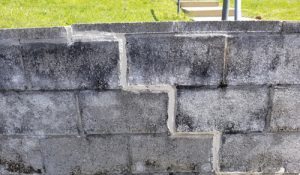 Depending on a variety of factors, including the type of soil behind your retaining wall, the quality of the wall itself, or extreme events (like a large storm), retaining walls can be damaged. They can start to lean, settle, or even buckle, putting anything below the retaining wall at risk.
Depending on a variety of factors, including the type of soil behind your retaining wall, the quality of the wall itself, or extreme events (like a large storm), retaining walls can be damaged. They can start to lean, settle, or even buckle, putting anything below the retaining wall at risk.
In some cases, the retaining wall might simply have to be demolished and rebuilt, but a foundation repair specialist can potentially save you time and money by repairing the wall.
They start by using what are known as helical anchors, which are welded to steel shafts. Holes are then cut in the retaining wall, and rotary equipment is used to push the anchor through the wall into the soil behind it.
A threaded adapter is then attached to the steel shaft, after which the hole is patched. A steel plate is then placed over the threaded adapter, and a large nut is attached to secure it in place.
The wall is now secure. Over time, the nuts can be tightened, pushing the wall back into place. You should not try this yourself as it can be very dangerous. A collapsing wall can injure or even kill. Instead, work with a professional.
Trust D-Bug Waterproofing with Your Retaining Wall Needs
If you’re going to have your retaining walls replaced or repaired this summer, now is the time to budget and get your work scheduled, before we’re fully booked.
With over 75 years of experience with basement waterproofing in southwestern PA, we know what it takes to get the job done. To schedule your free inspection, visit our Contact Us page or give us a call at 1-855-381-1528.

